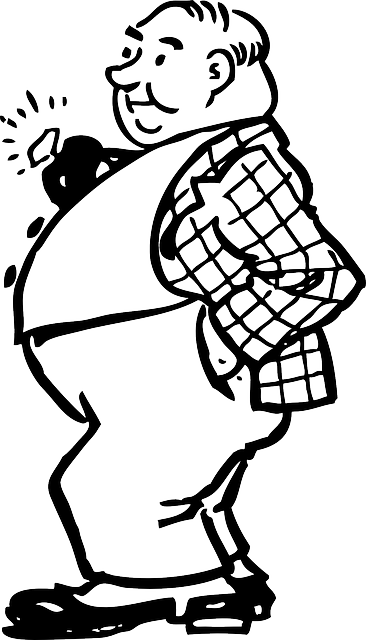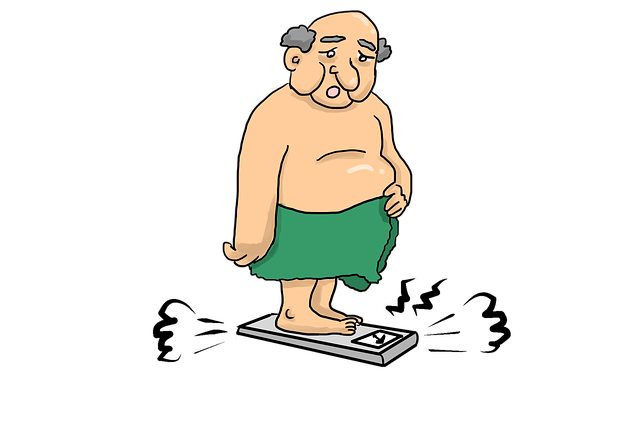Holistic fat removal and targeted fat loss methods offer distinct yet complementary approaches to achieving a slimmer physique. Holistic fat removal prioritizes overall well-being through balanced lifestyle changes, including nutrition, exercise, stress management, and mindfulness, for sustainable weight loss and improved health. In contrast, targeted fat loss leverages advanced technologies like cryolipolysis, laser lipolysis, and HIFU to break down and eliminate specific fat cells, enhancing skin tone without impacting healthy tissues. Both approaches require sustainable dietary strategies, regular exercise, quality sleep, and stress management, with clinical studies showing significant results in body contouring. For long-term success, adopting holistic habits post-treatment and maintaining mindfulness are key, ensuring the desired body composition is preserved over time.
Discover the transformative power of Holistic Fat Removal, a comprehensive approach to achieving your ideal figure. This article delves into every aspect of targeted fat loss, from understanding the science behind it to exploring non-invasive treatments and lifestyle modifications. Learn effective dietary strategies for sustainable results and essential post-treatment care tips for maintaining long-term outcomes. Uncover how these holistic techniques offer a permanent solution to targeted fat loss.
Understanding Holistic Fat Removal: A Comprehensive Approach

Holistic fat removal goes beyond spot reduction and targets overall fat loss through a comprehensive approach that considers both physical and mental well-being. It’s about creating a balanced lifestyle that promotes healthy habits, including a nutritious diet and regular exercise tailored to individual needs. Unlike targeted fat loss methods focused on specific areas, holistic approaches aim to melt away fat systemically, fostering a healthier body and mind connection.
This method involves a multi-faceted strategy that might include dietary adjustments, stress management techniques, mindfulness practices, and regular physical activity. By addressing these various aspects, holistic fat removal encourages sustainable weight loss, improves overall health, and cultivates a positive relationship with food and exercise, ensuring long-term success.
The Science Behind Targeted Fat Loss Techniques

The science behind targeted fat loss techniques revolves around understanding the body’s natural processes and how to manipulate them for specific results. Unlike general weight loss, which involves reducing overall calorie intake and increasing physical activity, targeted fat loss focuses on localized areas. This is achieved through a combination of advanced technologies, such as cryolipolysis (freezing fat cells), laser lipolysis (using light energy to break down fat), and high-intensity focused ultrasound (HIFU) (targeting deep fat layers). These methods selectively disrupt adipose tissue in specific areas without affecting surrounding healthy tissues.
Research has shown that certain regions of the body, like the abdomen, thighs, or love handles, tend to store more fat due to hormonal influences and genetics. Targeted fat loss techniques leverage this knowledge by applying controlled energy sources to these problem areas. By breaking down and eliminating fat cells in a localized manner, these methods not only lead to reduced inches and a slimmer appearance but also help improve skin tone and texture.
Lifestyle Modifications for Optimal Results

Achieving optimal results from holistic fat removal requires more than just external treatments; it involves a comprehensive approach that starts with lifestyle modifications. Diet plays a pivotal role in targeted fat loss, emphasizing whole foods rich in fiber and protein while minimizing processed sugars and unhealthy fats. Regular exercise, combining both cardiovascular workouts for burning calories and resistance training for building lean muscle mass, is essential to support the body’s natural fat-burning processes.
Additionally, prioritizing quality sleep and managing stress levels are often overlooked but crucial factors. Adequate rest allows the body to restore and rejuvenate, while chronic stress can lead to elevated cortisol levels, promoting fat storage, especially in the abdominal area. Incorporating relaxation techniques such as meditation or yoga alongside consistent movement can help balance these systems for more effective holistic fat removal.
Exploring Non-Invasive Treatments and Their Efficacy

In the pursuit of achieving a slimmer, more contoured physique, many individuals are turning to holistic fat removal methods, particularly non-invasive treatments that offer targeted fat loss. These advanced technologies have emerged as game-changers in the beauty and wellness industry, providing promising results without the need for surgery or extensive recovery periods. One of the key benefits is their ability to target specific problem areas, allowing for a more tailored approach to fat reduction.
Non-invasive treatments utilize various techniques such as ultrasound, radiofrequency, and laser technology to break down and eliminate fat cells. These methods are generally considered safe and effective, as they stimulate the body’s natural metabolism and promote collagen production. With minimal downtime and no scarring, they offer a more comfortable alternative to surgical procedures. The efficacy of these treatments has been well-documented, with many clinical studies demonstrating significant reductions in fat thickness and improvements in overall body contour.
Dietary Strategies for Sustainable Fat Reduction

Achieving targeted fat loss, a term that refers to reducing fat in specific areas, starts with dietary strategies that promote sustainable weight management. It’s not about quick fixes or restrictive diets; instead, it’s about making long-term lifestyle changes. Incorporating whole foods like lean proteins, complex carbohydrates, healthy fats, and plenty of fruits and vegetables can help control hunger, stabilize blood sugar levels, and provide the body with essential nutrients.
Portion control is another key aspect to consider. Eating mindfully and paying attention to satiety cues from your body can prevent overeating. Additionally, staying hydrated by drinking enough water throughout the day aids in digestion, metabolism, and reducing water retention, which can often be mistaken for fat.
Post-Treatment Care and Maintaining Long-Term Results

After undergoing holistic fat removal procedures, proper post-treatment care is essential for achieving and maintaining optimal results. This includes a combination of dietary adjustments, increased physical activity, and adequate rest. A balanced diet focused on nutrient-rich foods helps to support overall health while promoting recovery. Incorporating regular exercise, tailored to the individual’s needs, enhances metabolism and aids in shaping the body. Adequate sleep is crucial for repairing tissues and maintaining hormone balance.
Long-term success with targeted fat loss requires a sustainable lifestyle shift rather than a temporary fix. By integrating healthy habits into daily routines, individuals can ensure sustained results. Regular check-ins with healthcare professionals or wellness coaches can provide guidance, accountability, and motivation to stay on track. Additionally, staying hydrated, managing stress levels, and practicing mindfulness contribute to overall well-being, making it easier to maintain the desired body composition over time.
